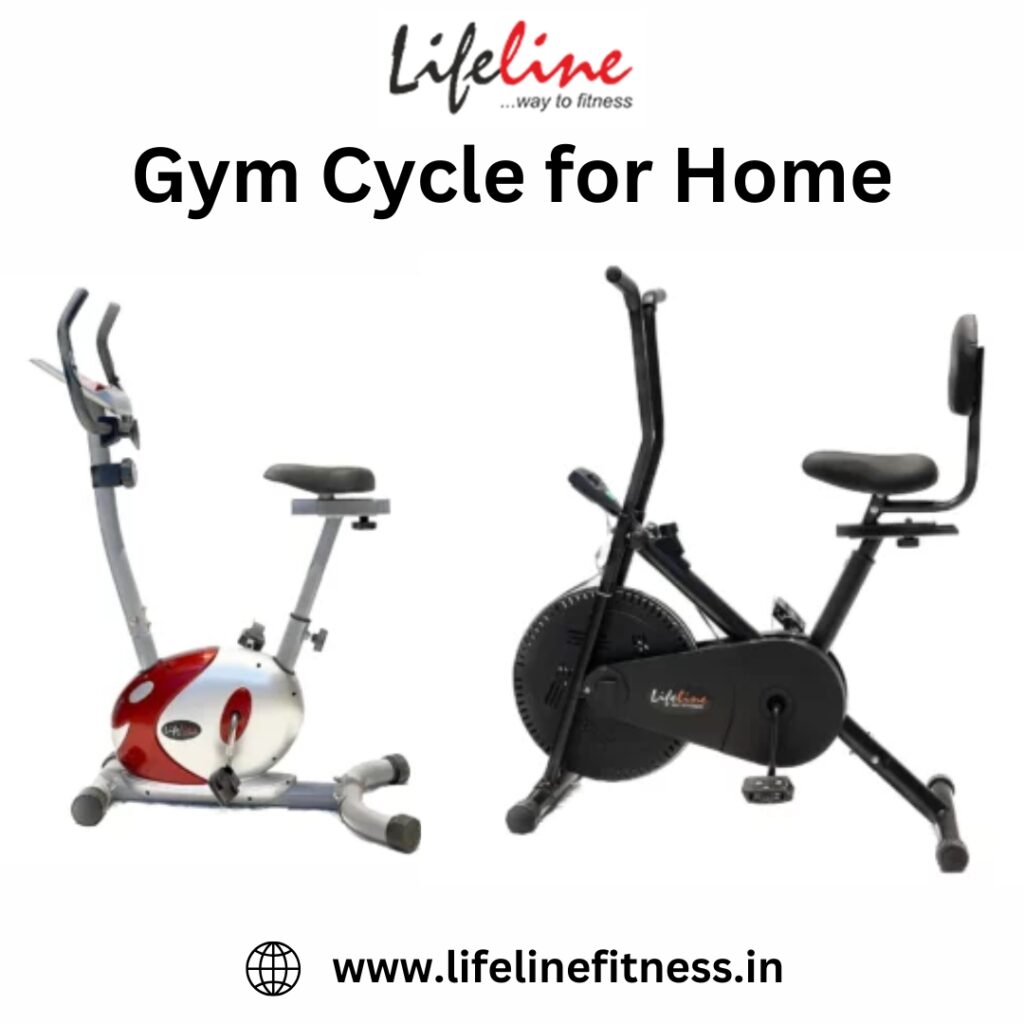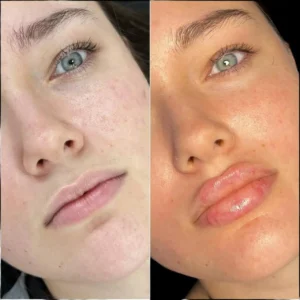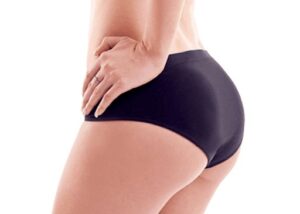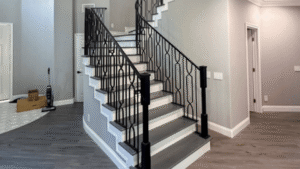
Gym Cycle for Home
Staying fit at home has become a top priority for many, and investing in a Gym Cycle for Home is one of the most effective ways to achieve your fitness goals. Whether your aim is weight loss, cardiovascular improvement, or general health maintenance, a gym cycle provides a convenient and low-impact way to exercise. However, with so many models and features available in the market, knowing what to consider before buying is crucial. In this guide, brought to you by Lifeline Fitness, we will walk you through everything you need to know before purchasing a home gym cycle.
1. Benefits of a Gym Cycle for Home
A Gym Cycle for Home offers multiple advantages:
- Convenience: You can exercise anytime without worrying about gym hours or commuting.
- Cardiovascular Health: Cycling strengthens the heart, improves blood circulation, and reduces the risk of cardiovascular diseases.
- Low-Impact Exercise: Unlike running, cycling is gentle on your joints, making it suitable for all age groups.
- Weight Management: Regular cycling helps burn calories and supports weight loss goals.
- Mental Health Benefits: Exercise releases endorphins, reducing stress and improving mood.
Investing in a home gym cycle allows you to enjoy these benefits consistently, making it easier to stick to a fitness routine.
2. Types of Gym Cycles for Home
When buying a Gym Cycle for Home, you’ll encounter different types of cycles:
- Upright Cycles: These resemble traditional bicycles and provide a natural cycling position. They are great for general cardio workouts.
- Recumbent Cycles: With a reclined seat and back support, these cycles are ideal for people with back problems or mobility issues.
- Spin Bikes: Designed for high-intensity workouts, spin bikes are perfect for those looking to improve endurance and burn maximum calories.
Choosing the right type depends on your fitness goals, space availability, and comfort preferences.
3. Key Features to Consider
Before purchasing a Gym Cycle for Home, pay attention to these essential features:
- Resistance Levels: Adjustable resistance helps you control workout intensity. Magnetic resistance is smoother and quieter than mechanical resistance.
- Display Console: A good console shows metrics like speed, distance, calories burned, heart rate, and time.
- Comfortable Seating: Look for padded, adjustable seats to ensure a comfortable workout experience.
- Pedals and Straps: Non-slip pedals with straps provide stability and prevent injuries during intense workouts.
- Build Quality: Sturdy frames with quality materials ensure longevity and stability during use.
These features enhance your workout experience and ensure the gym cycle meets your fitness needs.
4. Space and Placement Considerations
Before buying a Gym Cycle for Home, consider where you will place it:
- Available Space: Measure the area to ensure the cycle fits comfortably without obstructing movement.
- Noise Levels: Magnetic resistance cycles are quieter, making them suitable for apartments or shared living spaces.
- Floor Protection: Use a mat under the cycle to protect flooring and reduce vibrations.
Planning the placement in advance ensures a safe, convenient, and enjoyable exercise routine.
5. Weight Capacity and User Limitations
Different gym cycles have varying weight limits. Ensure the cycle you choose can comfortably support your body weight. Additionally, check for height compatibility to make sure the seat and handlebar adjustments provide a natural riding posture. This ensures safety, comfort, and optimal workout efficiency.
6. Budget and Cost Considerations
Gym cycles for home come in a wide price range. Here’s what to keep in mind:
- Entry-Level Models: Affordable cycles with basic features suitable for casual workouts.
- Mid-Range Models: Include better resistance systems, display consoles, and improved durability.
- Premium Models: Advanced features like heart rate monitoring, app connectivity, and professional-grade construction.
Decide your budget based on workout frequency, fitness goals, and desired features to find the best value.
7. Additional Features to Enhance Your Workout
Some modern Gym Cycles for Home come with extra features that make workouts more engaging:
- Heart Rate Monitors: Track your heart rate to stay in the optimal training zone.
- Bluetooth or App Connectivity: Sync with fitness apps to monitor progress and stay motivated.
- Adjustable Handlebars and Pedals: Allow personalized ergonomics for comfort and efficiency.
- Entertainment Options: Some cycles include holders for tablets or smartphones to watch videos or follow virtual training sessions.
These features add value, improve motivation, and make your home workouts more enjoyable.
8. Maintenance and Longevity
A home gym cycle is a long-term investment. To ensure durability:
- Regular Cleaning: Wipe down the frame and console to prevent dust and sweat buildup.
- Lubricate Moving Parts: Check the chain or magnetic system (if required) for smooth operation.
- Check Screws and Bolts: Ensure stability by tightening any loose parts periodically.
Proper maintenance extends the life of your gym cycle and ensures safe workouts.
9. Choosing a Reputable Brand
Selecting a trusted brand like Lifeline Fitness ensures quality, reliability, and warranty support. A good brand offers:
- Sturdy construction and high-quality materials
- Excellent customer service
- Warranty coverage for key components
- Access to replacement parts and accessories
Buying from a reputable brand gives peace of mind and a better overall workout experience.
10. Tips to Maximize Your Home Gym Cycle Workout
- Set Goals: Determine whether your focus is weight loss, endurance, or cardio improvement.
- Schedule Workouts: Consistency is key; plan a regular exercise routine.
- Mix Intensity: Alternate between high and low resistance to challenge your muscles.
- Track Progress: Use the display console or fitness apps to monitor improvements.
- Combine Workouts: Pair cycling with stretching or strength exercises for full-body fitness.
Maximizing your workout ensures you achieve results efficiently while enjoying the convenience of home exercise.
Frequently Asked Questions (FAQs)
Q1. What type of gym cycle is best for beginners?
For beginners, upright or recumbent cycles are ideal as they offer comfort and easy-to-use controls. Spin bikes are better suited for experienced users.
Q2. How much space do I need for a home gym cycle?
A space of at least 4×2 feet is recommended, with extra room for easy access and movement around the cycle.
Q3. Can a gym cycle help with weight loss?
Yes, regular use of a Gym Cycle for Home can burn calories, improve metabolism, and support weight loss when combined with a balanced diet.
Q4. How often should I use my home gym cycle?
For noticeable results, aim for 30–45 minutes per session, 4–5 times a week, adjusting intensity based on fitness levels.
Q5. Is it safe to use a gym cycle at home for seniors?
Absolutely. Recumbent cycles are particularly suitable for seniors due to back support and low-impact exercise, reducing stress on joints.
Conclusion
Buying a Gym Cycle for Home is a smart investment for maintaining fitness, losing weight, and improving overall health. By understanding the types of cycles, key features, space requirements, budget considerations, and maintenance tips, you can make an informed choice.
Choosing a trusted brand like Lifeline Fitness ensures durability, safety, and excellent support. With proper planning and consistent use, your home gym cycle will help you achieve your fitness goals conveniently and effectively, all from the comfort of your home.



